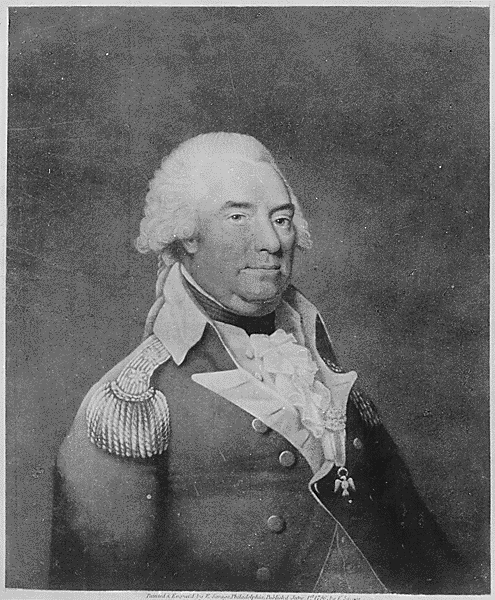Sponsor this page. Your banner or text
ad can fill the space above.
Click here
to Sponsor the page and how to reserve your ad.
-
Timeline
1799 Detail
The American System of Manufacturing is invented by Eli
Whitney, who uses semi-skilled labor, machine tools, and jigs to make standardized, interchangeable parts, then an assembly line of labor. Whitney first used the system to manufacture ten thousand muskets for the U.S. Government in a two year contract let in 1798, but took eight years to fulfill. Some contend that Whitney did not invent this method, but just promoted it.

Others say he should not get credit, as this was not exactly
interchangeable parts and that others were doing similar, and perhaps,
more pertinent manufacturing techniques than he was in 1799. But
there's no doubt that Whitney, from the letting of the contract in
1798, through the next eight years would produce muskets at a higher
rate than ever before. Whether he produced the five hundred muskets
some contend he did in the first year, again, is debatable. Some say he
didn't produce one prior to 1801. And despite the fact that he could
not produce the ten thousand muskets in those first two years as he had
promised, Whitney and his first blush into the industrial revolution
and assembly line type manufacturing did produce them in eight years.
That's a whole lot more muskets per year, over one thousand, than had
previously been manufactured, and the American System of Manufacturing,
whether born from this, or bathed from it, had begun in earnest.
During the contract, Whitney would prove its concept to the political
class in Washington, showing President John Adams and Vice President
Thomas Jefferson in 1801 just how the muskets and their manufacture
made them interchangeable. He took apart ten muskets, then switched
parts between them, amazing the politicians. Of course, some historians
contend that the muskets he used were not from the assembly line after
all, and hand picked for the demonstration to insure that they would
work.

Eli Whitney Before 1798
Whitney was twenty-seven years old on March 14, 1794 when
he patented his invention of the cotton gin, one of the first and most important inventions at the beginning of the age of industrialization. He had been born to a wealthy farming family in Massachusetts, manufactured nails in his father's shop during the final
years of the American Revolution, and graduated
from Yale in 1792. After college, Whitney migrated south to become a private tutor and worked on the Georgia Plantation of Nathaniel Greene's widow, eventually becoming a business partner of her next husband, Phineas Miller.
Over the next decade, Whitney's invention of the cotton gin and his role in the manufacture of interchangeable parts would have diverse impacts on the south. The invention of the cotton gin augmented slavery, as it doubled its capacity, with slave labor, to process raw cotton and make its growing profitable. By the end of the Civil War, the ability to manufacture, both weapons and other items, would end the conflict in favor of the industrialized north.

Others Who Should Get Credit for the American System
Genesis of the American System use of jigs, machine
tools, and semi-skilled labor to produce interchangeable parts for
individual items can be traced to other inventors, both in the United
States and abroad. This led to the rise of factories versus individual
workman's shops.
Late 18th century - French General Jean Baptiste Vaquette de Gribeauval
had the idea of making interchangeable parts for muskets to speed up
repairs on the battlefield. His protege Honore Blanc attempted to
implement the General's system, but did not succeed. Thomas Jefferson
was intrigued with Blanc's work, however, and introduced the ideas to
Secretary of War Henry Knox.
1803 - Marc Isambard Brunel, Henry Maudslay, and Simon Goodrich at the
British Naval Works in Portsmouth, use the system for sailing blocks.
1822 - United States Government achieves interchangeability at their
armories at Springfield and Harper's
Ferry. Some claim this ability occurred in 1815.
Photo above: Painting of the Whitney Gun Manufacturing Forge in
Whitneyville, Connecticut, 1827, William Giles Munson. Courtesy
Wikipedia Commons. There were approximately eighteen buildings in the
Whitneyville factory village. The village and site were first visited
and used by Whitney in 1798, where he could harness its water power to
run the gun manufacturing machines. Photo below: Eli Whitney Forge on
Mill River, Date Unknown, Historic American Buildings Survey. Courtesy
Library of Congress. Info source: Digitial History
digitalhistory.uh.edu; Eli Whitney Museum; Wikipedia Commons.

Back to Index




